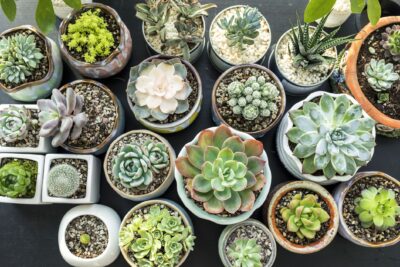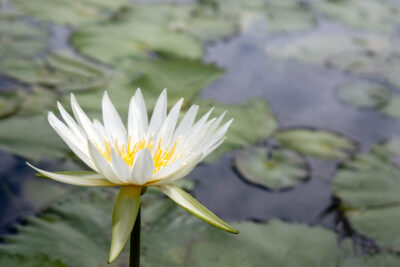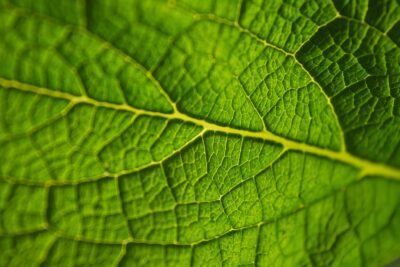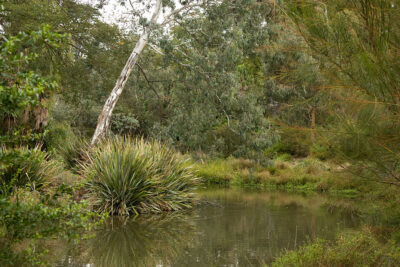
Identifying the Succulent: What Type Is It?

As succulents have become increasingly popular in recent years, many people are eager to learn more about these unique and fascinating plants. Succulents are a type of plant that store water in their leaves, stems, or roots, allowing them to survive in arid conditions. They come in a wide variety of shapes, sizes, and colors, making them a versatile and attractive addition to any indoor or outdoor space.
We will explore the different types of succulents and how to identify them. We will discuss the key characteristics that distinguish one type of succulent from another, including their leaf shape, texture, and color. Additionally, we will provide tips and tricks for properly caring for and maintaining your succulents to ensure their long-term health and vibrancy. By the end of this article, you will have a better understanding of the diverse world of succulents and be able to confidently identify the types of succulents you encounter.
- Look at the leaves and examine their shape and texture
- Check the color of the leaves and see if it matches any known succulent varieties
- Take note of the size and arrangement of the leaves on the stem
- Pay attention to any unique patterns or markings on the leaves
- Research common succulent types and compare their characteristics to your plant
- Consult a plant identification guide or app for assistance
- Reach out to a local nursery or gardening expert for their expertise
- Join online forums or social media groups dedicated to succulent enthusiasts for help in identifying your plant
- Take clear pictures of your succulent and post them online for others to help identify it
- Keep a record of any additional information, such as where you acquired the plant or its growth habits, to aid in identification
- Frequently Asked Questions
Look at the leaves and examine their shape and texture
When trying to identify a succulent, one of the first things to look at is the leaves. The shape and texture of the leaves can provide valuable clues about the type of succulent you have.
Leaf Shape
The shape of the leaves can vary greatly among different succulent species. Some succulents have long, thin leaves that resemble needles, while others have round, chubby leaves. There are also succulents with triangular, heart-shaped, or even star-shaped leaves. Observing the shape of the leaves can help narrow down the possibilities when identifying a succulent.
Leaf Texture
Another important characteristic to consider is the texture of the leaves. Succulent leaves can be smooth, rough, fuzzy, or even spiky. Some succulents have leaves covered in tiny hairs, which can give them a velvety or fuzzy appearance. Others have leaves with small spines or thorns for protection. By examining the texture of the leaves, you can further narrow down the potential species of your succulent.
Tip: Use a magnifying glass or macro lens to get a closer look at the leaves and observe any intricate details that may be present.
 Decoding Succulents' Red Edges: A Comprehensive Analysis
Decoding Succulents' Red Edges: A Comprehensive AnalysisLeaf Color
In addition to shape and texture, the color of the leaves can also be a helpful identifier. Succulent leaves come in a wide range of colors, including green, blue-green, gray, purple, red, and even variegated combinations. Some succulents may change their leaf color depending on the amount of sunlight they receive or the season. Take note of the dominant color or any patterns on the leaves to aid in the identification process.
- Green: Many succulents have green leaves, ranging from pale green to dark, vibrant shades.
- Blue-Green: Some succulents, like the popular Echeveria, have a bluish-green hue to their leaves.
- Gray: Certain succulents, such as the Senecio mandraliscae, have gray or silver leaves that can give them a striking appearance.
- Purple: Purple-leafed succulents, like the Aeonium arboreum 'Zwartkop', add a unique touch of color to any succulent collection.
- Red: Succulents with red leaves, like the Sedum rubrotinctum 'Aurora', can add a bold pop of color to your garden.
- Variegated: Some succulents exhibit variegation, which means their leaves have multiple colors or patterns. This can range from stripes and spots to marbled or mottled patterns.
By considering the shape, texture, and color of the leaves, you can start to narrow down the possibilities and get closer to identifying the type of succulent you have. However, keep in mind that there are numerous succulent varieties and hybrids, so identification may not always be straightforward. Consulting a succulent identification guide or seeking advice from experienced succulent enthusiasts can be beneficial when faced with particularly challenging specimens.
Check the color of the leaves and see if it matches any known succulent varieties
One of the first things you can do to identify a succulent is to examine the color of its leaves. Different succulent varieties exhibit a wide range of colors, from vibrant greens to deep purples and even shades of red. By comparing the color of the leaves to known succulent varieties, you can narrow down the possibilities and get closer to identifying your plant.
Here are some common succulent colors and the varieties they are typically associated with:
- Green: Most succulents have green leaves, so this color alone may not be enough to pinpoint the exact variety. However, some popular green succulent varieties include Aloe vera, Echeveria, and Haworthia.
- Blue/Grey: Succulents with blue or grey leaves often have a powdery or waxy coating, which helps them retain water. Common blue/grey succulent varieties include Echeveria 'Blue Prince', Senecio 'Angel Wings', and Pachyphytum 'Blue Haze'.
- Purple: Purple succulents can add a pop of color to your collection. Some well-known purple succulent varieties include Echeveria 'Perle von Nurnberg', Graptopetalum amethystinum, and Sedum 'Purple Emperor'.
- Red/Burgundy: Succulents with red or burgundy leaves often thrive in bright sunlight. Popular red/burgundy succulent varieties include Sempervivum 'Black', Aeonium 'Zwartkop', and Kalanchoe luciae.
Remember, leaf color can vary depending on the amount of sunlight a succulent receives, so it's essential to consider other factors like shape and texture when identifying your plant.
Next, we'll explore the shape and texture of succulent leaves to further aid in the identification process.
 Can You Identify These Gorgeous Succulents?
Can You Identify These Gorgeous Succulents?Take note of the size and arrangement of the leaves on the stem
When trying to identify a succulent, one of the key factors to consider is the size and arrangement of its leaves on the stem. This characteristic can provide valuable insights into the type of succulent you are dealing with.
First, take note of the size of the leaves. Are they small and compact, or large and fleshy? This can help narrow down your options when trying to identify the succulent. For example, if the leaves are small and closely packed together, you may be looking at a type of Haworthia or a Sedum.
Next, observe the arrangement of the leaves on the stem. Are they arranged in a rosette pattern, forming a circular shape? This is a common characteristic of many Echeveria varieties. On the other hand, if the leaves are spirally arranged along the stem, resembling a staircase, you might be dealing with a type of Crassula.
Furthermore, pay attention to the texture and color of the leaves. Are they smooth and shiny, or do they have a rough and pebbled texture? Are they green, gray, or even variegated? These additional details can help you further narrow down your search and identify the succulent more accurately.
Remember, identifying succulents correctly can be challenging, especially for beginners. It's important to consult reliable sources, such as succulent identification guides or online communities, for assistance and confirmation.
Pay attention to any unique patterns or markings on the leaves
When identifying a succulent plant, one of the key factors to consider is the unique patterns or markings on its leaves. These distinguishing features can provide valuable clues about the type of succulent you are dealing with.
 Ultimate Guide: Identifying Succulents and Getting the Help You Need
Ultimate Guide: Identifying Succulents and Getting the Help You NeedSome succulents have leaves with distinct stripes, while others may have spots, dots, or even intricate patterns resembling a mosaic. Observing these patterns closely can help narrow down the possibilities and determine the specific type of succulent.
For example, the Aloe vera succulent is known for its long, lance-shaped leaves with white spots arranged in a linear pattern. On the other hand, the Echeveria succulent often exhibits rosettes of plump, fleshy leaves with a powdery coating and ruffled edges.
By paying attention to these unique patterns and markings, you can start to unravel the mystery of your succulent's identity. However, it's important to note that some succulents may have similar patterns, so it's always best to cross-reference your observations with other identifying factors.
Research common succulent types and compare their characteristics to your plant
When trying to identify a succulent, it's important to start by researching common succulent types and comparing their characteristics to the plant in question. This will help you narrow down the possibilities and make a more accurate identification.
Here are some steps you can follow to help you in the identification process:
1. Examine the plant's foliage
Take a close look at the leaves of your succulent. Are they thick and fleshy, or thin and needle-like? Do they have smooth edges or are they serrated? Are the leaves arranged in a rosette pattern or are they more randomly spaced? These characteristics can provide important clues about the type of succulent you have.
2. Observe the plant's growth habit
Pay attention to how your succulent grows. Does it form a compact, low-growing rosette or does it grow tall and spikey? Does it produce offsets or pups around the base of the plant? Does it have a trailing or cascading growth habit? These growth habits can help narrow down the possibilities.
 Identifying Signs of Growth in Succulent Plants: A Guide
Identifying Signs of Growth in Succulent Plants: A Guide3. Take note of the plant's coloration
Succulents come in a wide range of colors, from vibrant greens to deep purples and even variegated patterns. Take note of the overall color of your plant, as well as any unique markings or patterns on the leaves. This can be another helpful characteristic in identification.
4. Consider the plant's flowering behavior
While not all succulents flower, some do produce blooms under the right conditions. If your succulent is flowering, take note of the color, shape, and size of the flowers. This can provide valuable information in identifying the species.
By researching common succulent types and comparing their characteristics to your plant's foliage, growth habit, coloration, and flowering behavior, you'll be well on your way to identifying the type of succulent you have. Remember, the more information you gather and compare, the more accurate your identification will be.
Consult a plant identification guide or app for assistance
Identifying the type of succulent you have can sometimes be a challenging task, especially if you're new to the world of succulent plants. Luckily, there are several plant identification guides and apps available that can help you in this process.
One popular plant identification app is PlantSnap. This app allows you to take a photo of your succulent and uses advanced image recognition technology to quickly identify the plant species. It also provides additional information about the plant, such as care tips and common varieties.
If you prefer using a website, FloraFinder is a great option. It offers a comprehensive database of different plant species, including succulents. Simply upload a clear photo of your succulent and let the website analyze it to give you the most accurate identification possible.
Another helpful resource is Plantifier, a crowd-sourced plant identification platform. Here, you can upload a photo of your succulent and receive identification suggestions from a community of plant enthusiasts and experts. This can be particularly useful if you're dealing with a rare or unique succulent variety.
 Discover a Comprehensive PDF Guide with Pictures of Various Succulents
Discover a Comprehensive PDF Guide with Pictures of Various SucculentsRemember, when using a plant identification guide or app, it's important to provide a clear and well-lit photo of your succulent. This will greatly increase the accuracy of the identification results.
By consulting these plant identification guides and apps, you can quickly and easily determine the type of succulent you have. This knowledge will not only help you care for your plant more effectively but also allow you to connect with other succulent enthusiasts who share the same passion.
Reach out to a local nursery or gardening expert for their expertise
If you're struggling to identify the type of succulent you have, don't worry! There are plenty of resources available to help you out. One of the best ways to get accurate information is by reaching out to a local nursery or gardening expert. These professionals have a wealth of knowledge and experience when it comes to identifying different types of plants, including succulents.
When you visit a local nursery, don't be afraid to ask for assistance. The staff members are usually more than happy to help you identify your succulent. They may ask you questions about the plant's appearance, such as the shape and color of the leaves, the size and arrangement of the rosettes, or any distinctive features it may have. Providing them with clear and detailed information will greatly assist them in identifying the type of succulent you have.
Another option is to consult a gardening expert. You can find experts in your community by attending gardening workshops or joining local gardening groups. These individuals are passionate about plants and often have extensive knowledge about different varieties of succulents. They can guide you through the identification process and provide valuable insights into the care and maintenance of your specific succulent.
Remember, it's important to consult multiple sources when identifying a succulent. While nursery staff and gardening experts are a great starting point, you can also use online resources, books, and plant identification apps to cross-reference and confirm the information you receive.
 Unveiling the Enigmatic World of Succulent Growths
Unveiling the Enigmatic World of Succulent GrowthsIdentifying the type of succulent you have can be a fun and rewarding experience. It allows you to learn more about your plant's unique characteristics and tailor your care routine accordingly. So don't hesitate to reach out to local experts and tap into their knowledge. With their help, you'll be able to confidently identify your succulent and provide it with the care it needs to thrive.
When it comes to identifying the type of succulent plant you have, joining online forums or social media groups dedicated to succulent enthusiasts can be incredibly helpful. These communities are filled with experienced succulent lovers who are passionate about sharing their knowledge and helping others.
Here are some tips on how to effectively use these online resources:
1. Take clear and detailed photos
Before posting your query, make sure to take clear and detailed photos of your succulent from different angles. This will help others get a better understanding of the plant's characteristics and make it easier for them to identify it.
 Help! Can you identify this succulent with unique leaves?
Help! Can you identify this succulent with unique leaves?2. Provide essential information
Along with the photos, be sure to provide essential information about your succulent. This may include details such as its size, color, texture, and any peculiar growth patterns or markings. The more information you provide, the higher the chances of someone being able to identify your plant accurately.
3. Ask specific questions
When posting your query, ask specific questions about the plant's features that you are unsure about. This will help others focus their responses and provide you with more targeted information. For example, you can ask about the shape of the leaves, the presence of flowers, or any distinct characteristics that stand out.
 Discover the Enchanting Succulent Plant with Spotted Leaves
Discover the Enchanting Succulent Plant with Spotted Leaves4. Engage with the community
Once you've posted your query, make sure to engage with the community by responding to comments and thanking people for their input. This will not only show your appreciation but also encourage others to continue helping you. It's important to remember that these communities thrive on mutual support and sharing of knowledge.
5. Utilize search functionalities
Before posting your question, it's always a good idea to utilize the search functionalities within these online forums or social media groups. Chances are, someone might have already asked a similar question, and their post might contain valuable information that could help you identify your succulent without having to wait for responses.
Remember, the key to successfully identifying your succulent is active participation and effective communication within these online communities. By following these tips and engaging with experienced enthusiasts, you'll be one step closer to discovering the exact type of succulent you have.
Take clear pictures of your succulent and post them online for others to help identify it
 Identifying a Succulent Plant with Scalloped Leaf Edges
Identifying a Succulent Plant with Scalloped Leaf EdgesIdentifying your succulent can be a fun and exciting process. One of the best ways to get help is by taking clear pictures of your succulent and posting them online. By sharing your photos, you can tap into the vast knowledge and experience of fellow succulent enthusiasts who can help you identify the type of succulent you have.
When taking pictures of your succulent, make sure to capture the plant from various angles. Take close-up shots of the leaves, stems, and flowers, if any. Pay attention to the overall shape and color of the plant, as these can provide important clues for identification.
Once you have a collection of clear and detailed pictures, it's time to post them online. There are various online communities and forums dedicated to succulent enthusiasts where you can seek help. Here are some popular platforms where you can share your photos:
- Succulent Subreddits: Reddit has several active communities focused on succulents, such as r/succulents and r/whatsthisplant. You can create a post and upload your pictures, and fellow members will help you identify your succulent.
- Facebook Groups: There are numerous Facebook groups dedicated to succulent lovers. Join a group that suits your interests and share your pictures there. Members are usually eager to help and share their knowledge.
- Instagram Succulent Community: Instagram is not just for sharing pretty pictures. It also has a vibrant succulent community. You can use relevant hashtags like #succulentidentification or #plantidentification to increase the chances of getting help.
When posting your pictures, provide as much information as possible about your succulent. Mention its size, location, and any distinctive features it might have. The more details you provide, the easier it will be for others to identify your succulent accurately.
Remember, while posting pictures online can be a helpful way to identify your succulent, it's always a good idea to cross-check any suggestions you receive. Consult reliable sources, such as books or reputable websites, to confirm the identification before making any conclusions.
By leveraging the power of online communities, you can embark on a journey of discovering the unique characteristics and needs of your succulent. So, don't hesitate to share those pictures and get ready to unravel the mystery of your succulent's identity!
Keep a record of any additional information, such as where you acquired the plant or its growth habits, to aid in identification
 Where to Find Succulents That Resemble Jelly Beans: A Guide to Buying
Where to Find Succulents That Resemble Jelly Beans: A Guide to BuyingIdentifying the succulent plants in your collection can sometimes be a challenging task, especially if you have a variety of species. To make the process easier, it is helpful to keep a record of any additional information related to each plant. This information can include where you acquired the plant, its growth habits, and any unique characteristics.
One way to organize this information is by creating a spreadsheet or a dedicated notebook for your succulents. In this record, you can include details such as the date of acquisition, the source of the plant (whether it was purchased from a nursery, received as a gift, or propagated from another plant), and any specific care instructions you received along with the plant.
Additionally, it is important to note the growth habits of each succulent. Some succulents have a trailing or cascading growth habit, while others grow in a more upright or rosette form. These growth habits can provide valuable clues for identification purposes, especially when combined with other distinguishing characteristics.
When observing your succulent, take note of any unique features that set it apart from other plants. This can include the color and texture of the leaves, the presence of spines or thorns, the shape and arrangement of the rosettes, or any patterns or markings on the leaves. These distinctive characteristics can help narrow down the possibilities when trying to identify a particular succulent.
Furthermore, it can be helpful to take clear photographs of your succulents and document them in your record. This allows you to visually compare your plants with online resources, plant identification apps, or consult with fellow succulent enthusiasts for assistance.
By keeping a record of additional information and observing the unique characteristics of each succulent, you can create a valuable resource that aids in the identification process. This will not only help you keep track of your plants but also deepen your knowledge and appreciation for these fascinating and diverse plants.
Frequently Asked Questions
1. How do I identify the type of succulent I have?
To identify a succulent, look for distinctive features such as leaf shape, color, and texture. You can also use online resources or consult a gardening expert for assistance.
2. What are some common types of succulents?
Some common types of succulents include Echeverias, Aloe vera, Sedums, and Haworthias.
3. How can I differentiate between a cactus and a succulent?
Cacti are a type of succulent, but not all succulents are cacti. Cacti typically have spines or thorns, while other succulents may have smooth leaves or other unique characteristics.
4. Are there any specific care instructions for different types of succulents?
Yes, different succulents have varying care requirements. Some prefer bright sunlight, while others thrive in partial shade. It's important to research the specific needs of your succulent to ensure proper care.
If you want to read more articles similar to Identifying the Succulent: What Type Is It?, you can visit the Identification category.






You Must Read